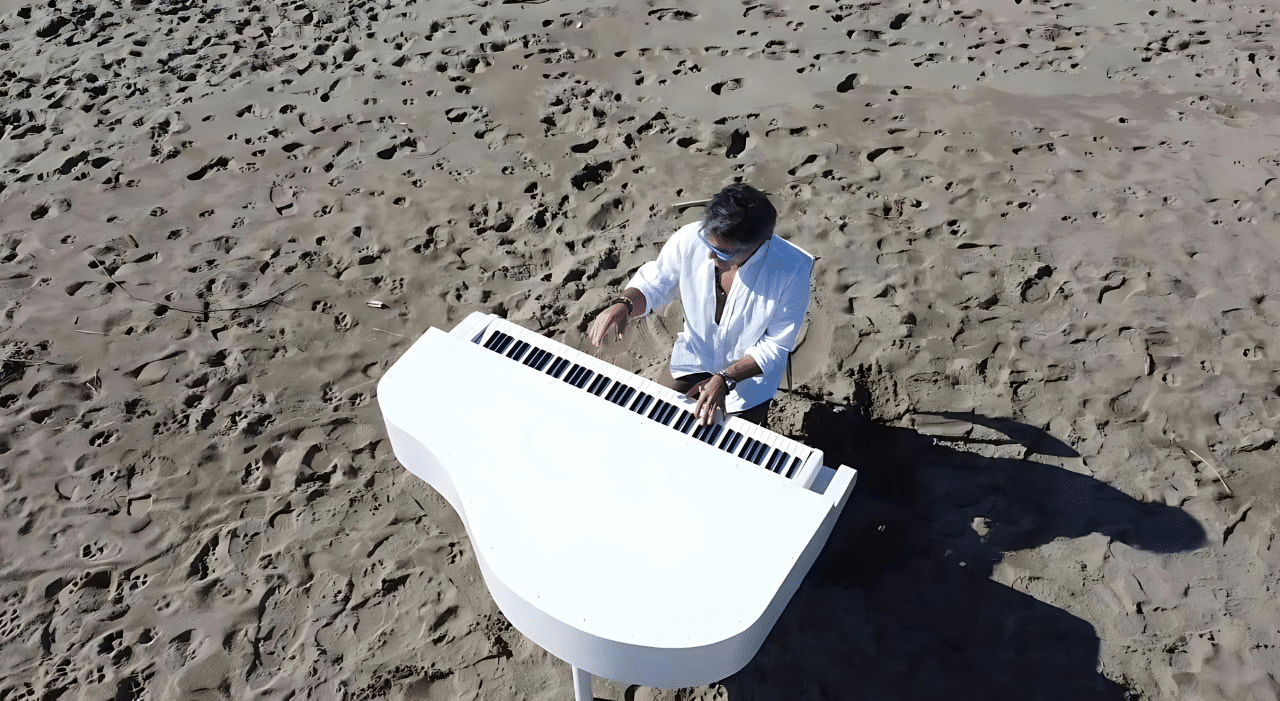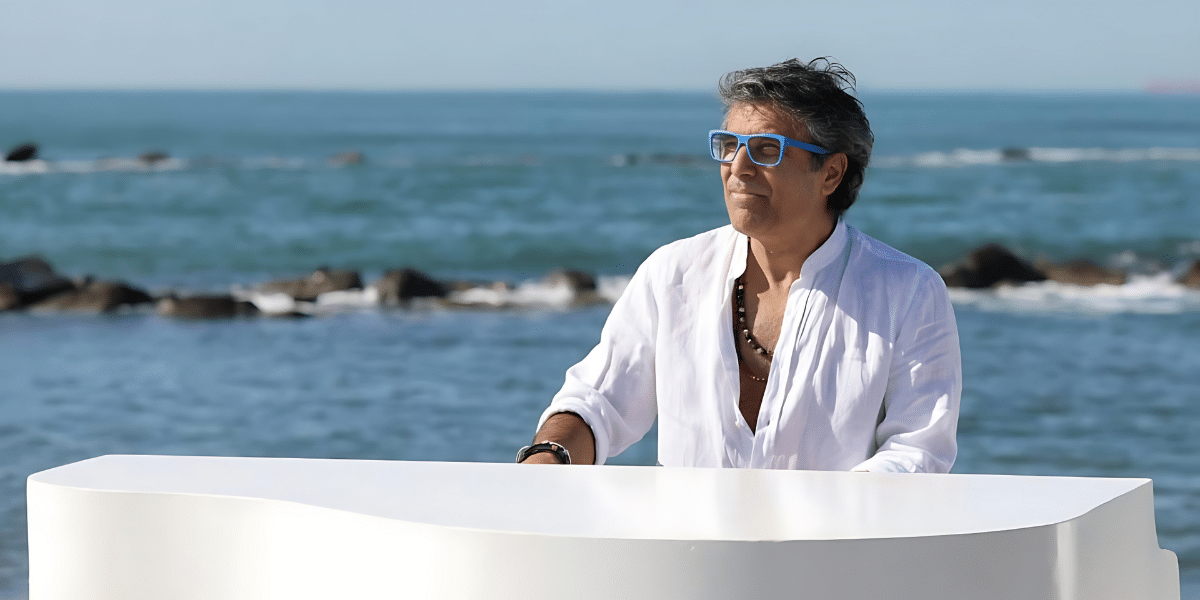Paul Robino, a classical pianist, harbors a curiosity for the electronic experimentation of the 1970s. His love for his sea and his land, Italy, is evident, as is the allure of philosophy and literature. Coupled with a constant desire to travel and meet new people, these elements birthed “The Senses of the Sea: Concerto for Piano and Narrating Voice,” which Paul Robino will bring to New York at the Italian Cultural Institute on July 25.
From Salemi to New York: almost like a scene from a movie. Paul Robino was born in Salemi, a town in the Sicilian hinterland near Trapani, from a family of simple people for whom work always meant hard labor, physical exertion, and an expectation for their children to follow suit. But at the age of fifteen, Paul, determined as ever, decided he wanted to enroll in the Conservatory and study piano. Nothing came easy: from convincing his parents to support him in such an unconventional choice to facing the daily commute from Salemi to Trapani and back. Days as a young man were spent between Conservatory lessons and hours upon hours at the piano under the tutelage of one of the era’s skilled and stern Masters.
Paul Robino is a master composer. His primary source of inspiration has always been nature, from the relaxing mountains to the thrilling and overwhelming sea. Yet, his music also emerges from encounters with people, their stories, and everyday life, which always provide inspiration given his innate curiosity about the world around him. It also stems from delving into the classics of philosophy and literature, with a keen eye on the current productions. Paul wasn’t always an avid reader; it’s an interest that sprouted when he moved to Milan, thanks to an encounter with someone who made him realize the interconnectedness of literature and philosophy with music.

His latest work, “The Senses of the Sea” is a project that saw Paul Robino exploring new sonic dimensions, leading to the creation of a concept album where classical piano music meets electronic influences, intertwined with strings and percussion. The goal was to give voice to the sea in its various manifestations and conditions through musical notes. The result is powerful, with each track taking the listener on a different emotional and physical journey.
For those eager to dive deeper into the mesmerizing compositions of Paul Robino, his music is available for streaming on Spotify, where they can experience the captivating fusion of classical piano and electronic influences showcased in “The Senses of the Sea.”
In the concert for piano and narrating voice that Paul will bring to New York, alongside the notes, words also speak: the love for literature and philosophy translates into a series of “paintings” that, through texts by Moravia, Calvino, Cacucci, Leopardi, but also by Jacque Brel, Paul Verlaine, Karl Jasper, combined with his music, fulfill Paul Robino’s desire to bring the sea and Italian and European culture to the United States.

To complete the cultural and emotional experience of “The Senses of the Sea,” there will be a projection of sea images: glimpses of Sicily, Paul’s homeland, but also of Elba Island and the suggestive landscapes of the Italian sea, unparalleled in charm, beauty, and variety of perspectives. After the concert, those interested in exploring more of Paul Robino’s work and staying updated on his musical journey can connect with him on Instagram (@paulrcuddle) for behind-the-scenes glimpses and updates.
The original music by Paul Robino is produced by Maestro Vince Tempera. The texts are taken from “The Senses of the Sea” and “Sea Tales” published by the Acqua dell’Elba Foundation, as well as from classics of Italian and European literature.
Published By: Aize Perez

















